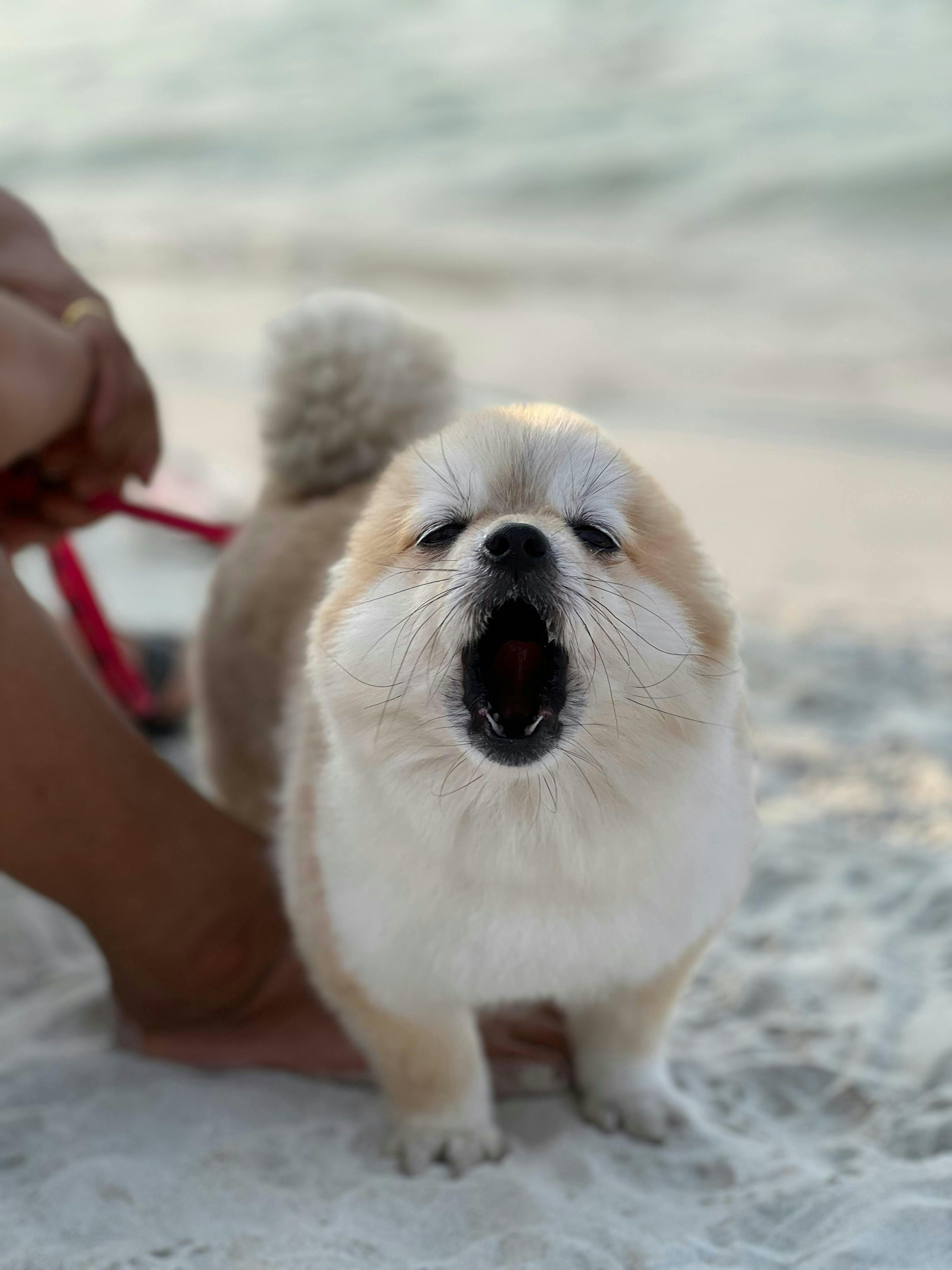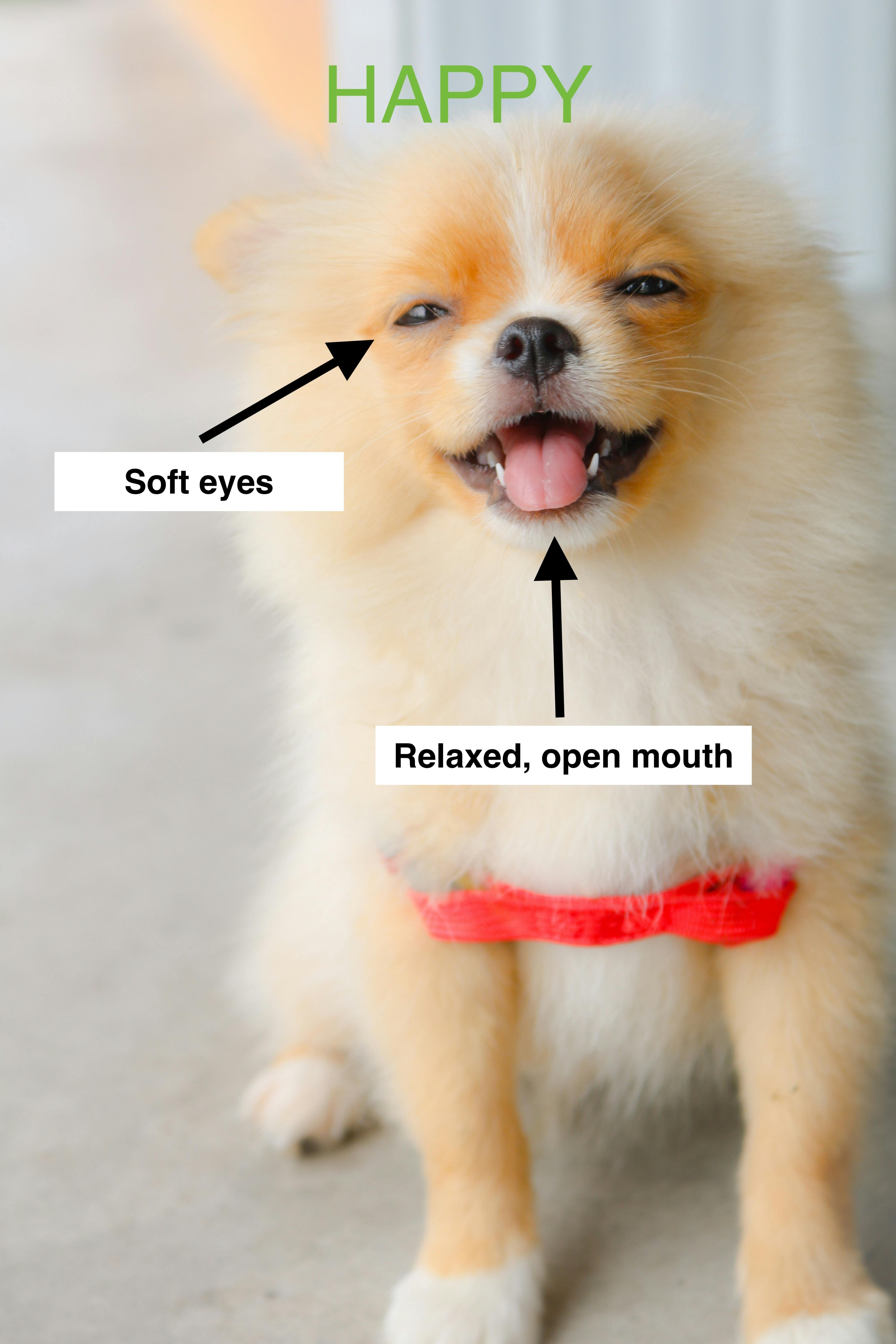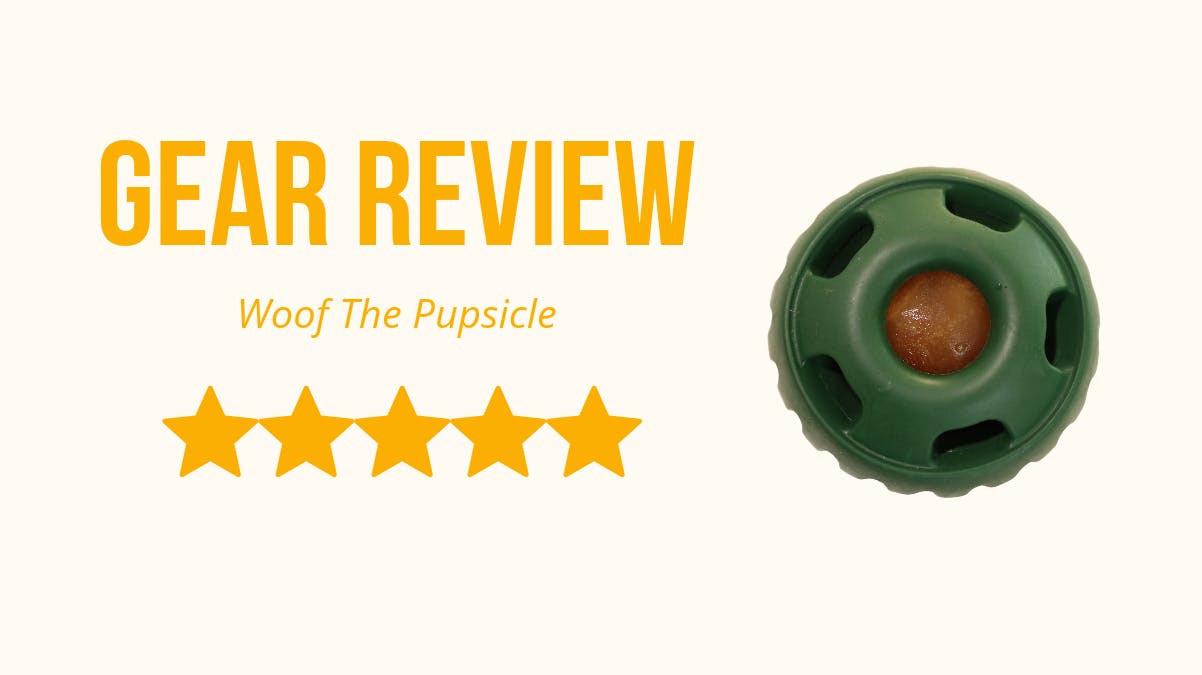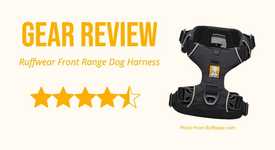Everything You Need to Know about Threshold —The Key In Reactive Dog Rehabilitation
Reactivity | By: TAYLOR WYLLIE, KPA CTP | Mar 13, 2025

Get Your Free Reactive Dog Masterclass
Unlock the secrets of rehabilitating your reactive dog with this masterclass video
This post is on the more technical side, but threshold is an important concept to understand when rehabilitating your reactive dog. So, put on your glasses, chug that coffee, and let’s get nerdy.
What is Threshold?
To make things difficult, dog trainers both define and measure threshold differently. So, there’s not one universally accepted definition in the training world.
I define threshold as the moment your dog crosses from calm to concerned/aroused.
When a dog is under threshold, they are feeling fine. (Fine in the real sense of the word, not the “fine” someone who’s-clearly-upset snaps at you when you ask how they are.)
When a dog is over threshold, they are too stressed or emotional to be in their thinking brain.
Let’s say you’re afraid of spiders. Your threshold may be the moment you are a foot away from a spider. At this point, you can only focus on that spider, anxiety washing through your body.
Of course, there’s a lot of feelings between calm and oh-jeez that spider is definitely going to kill me.
So, a threshold is less black-and-white and more a sliding scale of gray.
Threshold as a Stoplight

A lot of dog professionals like to talk about threshold as a stoplight.
A green light is when your dog has relaxed body language and is not experiencing any stress.
A red light is when your dog is super stressed or aroused, experiencing a full-blown meltdown involving barking, lunging, growling, even biting.
A yellow light is in-between the two. Your dog is experiencing some stress. They might get fixated on their trigger and may need your help to disengage from their trigger. But they usually can disengage.
You primarily want to stay in the green with maybe a small amount of yellow. But, as dog behaviorist Dr. Amy Cook says, more of a green-ish yellow than a red-ish yellow.
The Importance of Threshold
One of the best things you can do for your dog is to try and limit how often they are over threshold, particularly when they are in the red-ish yellow and in the red.
Note that I said try to limit, not completely avoid. I’ve been very disheartened to hear trainers say to never let your dog go over threshold because that’s an IMPOSSIBLE standard. We’re only human, and living with a reactive dog is a Herculean challenge. So, limit those over threshold moments, but know that they will still happen.
As much as it may seem like it, your dog doesn’t want to be reactive. When they’re barking, lunging, or growling—it’s not a good time for them either.
They’re actively releasing cortisol into their bodies, which is a stress hormone that can stick around and build up. In fact, if your dog is chronically experiencing stress then the “good” hormones like dopamine, serotonin, and endorphins can be reduced and depleted, creating physical and mental fatigue—and more stress.
And, the more your dog is stressed, the more they’ll continue to perform unwanted behaviors like barking and lunging.
So, it’s a good idea to have a few decompression days—if possible—after your dog has a major meltdown. Keep things as stress free as possible, and add extra enrichment into their lives.
And expect that your dog will be more reactive than usual after a meltdown.

That’s one reason—that reacting causes your dog to be flooded with stress, which not only decreases their quality of life, but makes them more prone to reacting.
The second reason to limit over threshold moments — particularly that red light with the barking and lunging—is that your dog is rehearsing these behaviors and likely being accidentally rewarded for them too.
If your dog barks at a man walking down the street and the man moves away then your dog is learning that barking causes men to leave. Never mind that that man was going to continue walking away anyway. Thus, your dog will continue to bark so that men continue to leave.
The more your dog rehearses unwanted behaviors, the more ingrained they become.
Additionally, learning doesn’t happen during over threshold moments.
I’ll say that again—learning only happens when your dog is in the green or the very beginning of yellow. That is when they’re under their threshold, and either unconcerned about a trigger or only a little bit concerned, but able to self-soothe and come off of it.
When your dog slips into a red-ish yellow and red that’s where you switch from behavior modification and training into management.
To do the real work of behavioral modification and changing your dog’s emotional response to their triggers, your dog needs to be stress free. Or, at least, only slightly stressed.
The Slide of No Return

I learned the slide metaphor from Terry Ryan, an amazing dog trainer who happened to be my instructor in my dog training professional program.
When you are approaching the slide, maybe starting to climb to the top, you can still easily decide that you don’t actually want to go down the slide.
Even when you are at the top, you can still turn around, though it’s more difficult.
But once you start sliding it’s very difficult to stop.
The same goes with dogs.
The easiest time to stop a reaction is before your dog has climbed to the top of the metaphorical slide.
So, pay attention to their stress signals. When they start displaying subtle signals of stress—like they start panting, stiffening, yawning, giving a whale eye, hackles raising, ears pulling back, or are unable to take a breath—it’s time to help them walk away from that slide.
What Causes Dogs to Go Over Threshold?
What pushes your dog over their threshold is different for every single dog, and frequently different for the same dog on different days. That’s why it’s important to pay attention to your dog’s body language. Your dog will tell you whenever they’re experiencing stress.
Look for:
- Ears pinned back or flat against the head
- Ears held perpendicular to the body
- Half-moon or “whale” eyes. (Much of the whites of the eyes are visible in a crescent moon shape.)
- Rapid panting with the corners of the mouth pulled back
- Mouth suddenly shutting when the dog had been previously happily panting
- Yawning

- Shaking off like they would after a bath, but they’re dry (this means they are handling stress by “shaking it off”)
- Lip-licking
- Scratching
- Randomly starting to sniff or sniffing very intently
You can also look out for differences in your dog’s behavior that indicate stress:
- Is your dog suddenly unwilling to take treats? Or are they taking treats harder than usual (called sharking in the industry)?
- Is your dog usually attentive to you, but now seems to be ignoring you?
- Is your dog scanning their surroundings?
Trigger Stacking and Threshold
Your dog’s triggers can stack up just like ours can.
If you spill coffee on yourself while running out the door to work that sucks, but okay. But if you then experience major traffic on your commute, and your boss says something mean, and your child’s daycare calls telling you they’re sick — well, then, you might be in tears by lunch.
The same is true with dogs.
Say a dog is a little bit afraid of people wearing large coats. They might be right at or slightly below their threshold if they see a man in a large coat. But they’re able to walk by him.
Say the same dog is afraid of children. They might be slightly over their threshold when they see a child. But, the dog’s guardian could turn around, and prevent a meltdown.
But if that dog walks past a man with a large coat and then sees the child, it’s more likely that the dog will react.
Because stress adds up.
The dog is already stressed having seen the big coat wearing man, and the stress added by seeing the child will send them straight to a red light. That is so far over threshold that the dog starts to bark, lunge, or otherwise react.
That is trigger stacking.

Another way to think about it is by picturing a cup. The more stressors your dog experiences, the more their cup fills up. If their cup is overflowing, they're going to be more reactive and offer more unwanted behaviors. You can empty his cup by limiting their exposure to triggers.
I accidentally filled up my dog Scott’s cup all the time when we first adopted him. I thought he needed more exercise. I’d heard that an exercised dog is a happy dog, so I took him on multiple long walks or runs a day.
He was well-exercised, but his behavioral problems only got worse.
Now, I know that—despite my best intentions—I was filling up Scott’s cup and then some.
These days, I keep a close-eye on his cup. I look for signs of trigger stacking. When I see these signs, I cut the walk short and limit his time outside for the next day or two, depending on exactly how full his cup is.
This may seem like a punishment, but in reality it’s helping Scott manage his anxiety.
Remember the spiders? Let’s say you’ve been around a lot of spiders lately and you’re, frankly, over it. Wouldn’t you be grateful if your friend took you away from those spiders for a little while?
Trigger stacking—or the overflowing cup—helps explain why your dog may seem to lose it more easily than other times. If they’re reacting at something they usually can ignore, think about the other stressors they’ve encountered recently. How full is their cup?
And, of course, it’s important to watch out for trigger stacking, so you can reduce your dog’s overall stress levels. As I mentioned earlier, chronic stress leads to more stress leads to more unwanted behaviors.
We want to disrupt this cycle.
How to Stop Your Dog from Going Over Threshold

Simply put, you need to manage your dog by doing things like turning around when you see a trigger in the distance or using active management techniques like a hand target, find-it (scattering treats on the ground), leave it, kong hand (putting treats in your hand and having your dog eat out of it), the 1,2,3 game (counting to three and giving your dog a treat on three), etc. Basically distracting your dog with treats.
It also looks like avoiding situations that will be too stressful for your dog. Like stopping taking your dog on hikes where they'll encounter off-leash dogs.
Unfortunately, this can look cruel to people who are outside of the situation looking in.
Some people in my life definitely didn’t get why I left Scott at home when we went on hikes or beach trips to dog friendly lakes. They thought that every dog would love to be included on these trips.
But, in reality, Scott was a ball of stress, anxiety, and frustration when we’d take him. Taking him to these places certainly wasn’t for him, it was for us and the appearance of being Good Dog Owners.
It’d be like taking an arachnophobe to a super fun amusement park … only it’s crawling with spiders.
And—the good news is—the more you manage your dog the less you have to manage your dog.
By that I mean, as soon as we started managing Scott, his overall stress decreased and we started having to rely on management less.
We also started to be able to take him more places. In the past six months, we’ve gone on many successful hikes with Scott. We just make sure that we have treats at the ready, that we’ve practiced our management games recently, and that these hikes aren’t popular with dogs.
Of course, your situation may be different. If your dog is people-reactive, they might be just fine on hikes but meltdown in the suburbs. Just pay attention to what your dog is telling you when you take them places.
Conclusion
Helping your reactive dog stay under threshold isn’t about being perfect—it’s about setting them up for success and making their world feel a little less overwhelming. You won’t always get it right (because, well, life happens), but the more you manage their stress and watch for those early warning signs, the easier things will get over time.
At the end of the day, your dog isn’t trying to be difficult—they’re just struggling in a world that sometimes feels like too much.









